
Time is running out. Like in the song, “it’s now or never.” With friends dropping dead one after the other, the thought occurred to me, I might be next. The will and the living will are already in the right hands. It’s always best to get “pending” stuff like those out of the way.
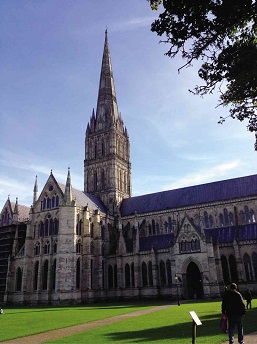
I have a wish list, call it a bucket list, of places to see and revisit. So I decided to strike some items off this list and planned a doable itinerary with the help of friends, the key to the doing.
My journey began in September this year and ended 34 days later at the Charles de Gaulle airport in Paris.
The smiling faces of British friends Geoff and Jo Cole at the airport made me feel welcome. They had come from their country home in Limag, France, and collected me in the airport to bring me to England.
The three of us got into their Volkswagon Passet Estate and headed north to Calais, the major ferry point in northern France. It was the first stretch of a 2,500-mile road trip through the England and Scotland countryside. The road trip would cover three weeks.
We stayed in a campanile in Bethune for an overnight rest before crossing the English Channel the next day.
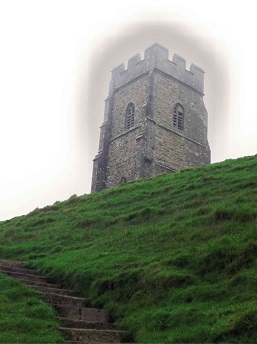
After French immigration stamped our passports, the car, with us in it, went in line for vehicles to be loaded into the train. It took 35 minutes to cross over to England into the underground tunnel.
After checking in with British immigration, we headed west to Hereford. We passed through the motorways and villages, and I took note of the manicured English hedges.
The roadsides were empty, not as populous as the ones in London. There was road discipline: No swerving, no grabbing of space, and no blowing of horns.
Loading gasoline was self-service; one wore gloves to protect oneself from carcinogenic substances.
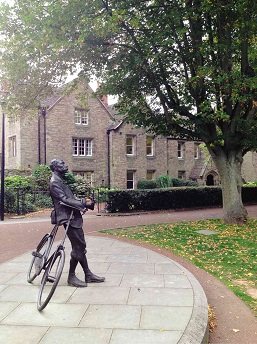
Hereford
Hereford, an old city that goes back to 1079, is located by the River Wye. Both a cathedral city and country town, it is famous for the Hereford Bull.
The Hereford Cathedral is built along the Gothic architecture style with the Mappa Mundi, a medieval map of the world from the 13th century.
A short walk from the cathedral is All Saints’ Café, which is open on weekdays but closed on Sundays to give way to Sunday service. Some churches across Europe have become commercial to raise funds for their upkeep. They let out spaces to banks, restaurants and hotels.
Hereford was our base and jump-off point to destinations in England and Scotland. The Coles thoughtfully prepared an itinerary that brought us on a long road trip to the British Isles, through old towns and old cities where things worked.
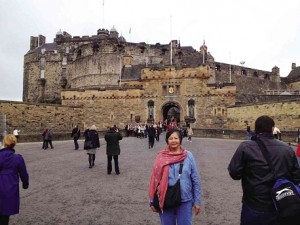
Apart from art, we saw the beautiful country landscape. I met their friends, we did some shopping and also had chill-out time in between.
In Manchester, we saw the Lowry exhibit, and I had my first steak and kidney pie. The crust was excellent, with a filling of beef strips, diced kidney, fried onion and tasty brown gravy. Steak and kidney pie is representative of British cuisine as adobo is to Filipinos.
Glasgow
We headed for Glasgow, passing by the town of Kendal and Windermere and Ullswater Lakes through beautiful winding roads and mountains.
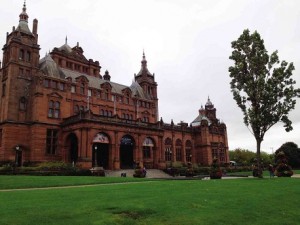
We were blessed with good weather, the sun shining on most days. The sky was blue and there were beautiful cloud formations that dominated the horizon.
Some afternoons, the colors changed to grey and somber blue, and the temperatures dipped, prompting us to put on more layers of clothing.
In Glasgow, we visited the Auchentoshan Distillery, makers of single malt whiskey. A young, charming gentleman showed us around and briefed us on malt whiskey production. He took us down to the cellar where the casks were stored.
The cellar was cold, dungeon-like, dark, and giving a damp feeling. Several rows of casks filled the room, stored there for years. A cask is a hollow cylindrical container, traditionally made of wood such as oak, where the alcohol is stored to age it.
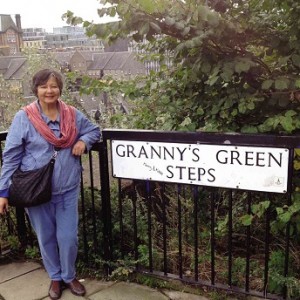
Our guide revealed that two percent is lost in the cask’s content, and this is beautifully called “angel’s share.” He also said that the tester was a woman, who decided if the quality desired was reached.
The tour ended in the bar where we tasted single malt of different ages. Our guide cum bartender was surprised when I gulped the first shot he poured in my glass, which gave instant warmth to the body. He said, “It takes 12 years to make, so best to smell first and sip slowly.”
Loch Ness
From Glasgow, we headed north towards the Scottish highlands up to Ft. Williams, a center for mountain climbing and hillwalking around the Ben Nevis and Munro mountains.
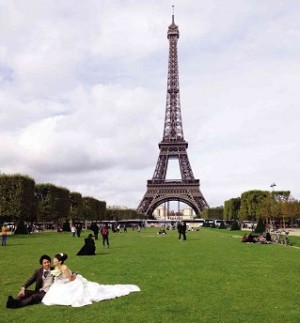
These mountains stand majestic with the clouds and the sky as backdrop. They make their smooth descent to the planes leaving wide open spaces.
We saw the beginning of autumn in the Scottish highlands: Leaves turning from green to golden, yellow, red, orange and even purple. Then we headed for Loch Lomond and Loch Ness, the largest, deep, inland freshwater loch or lakes in Great Britain.
The still waters brought on a feeling of peace in me.
We ended the day in the Eagle View in the village of Newtonmore where we enjoyed Scottish hospitality. This bed and breakfast topped the list of places we spent the night, that included an inn, lodge, hotel and home.
Edinburgh
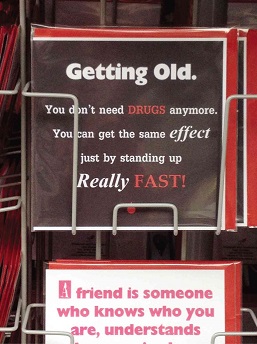
We set off early for Edinburgh, the capital of Scotland known for its highly educated population because of its four universities, and festivals that happen throughout the year.
We walked through the Old Town and up to the Edinburgh Castle.
The town center was alive with music and some street performances, mostly solo.
From here, we passed by Durham, York, and Sheffield where many ancient buildings still stand.
On this trip, we struck off several places to see on our collective bucket list. The first was traveling across the Scottish Highlands. The second and third were a personal pilgrimage to sacred sites: Stonehenge and Thor in Glastonbury.
Stonehenge is an ancient temple of ceremony, burial and celebration, believed to have been constructed 5,000 years ago. The monument is made of sarsen and blue stones arranged in alignments to mark the passage of the sun and changing seasons.
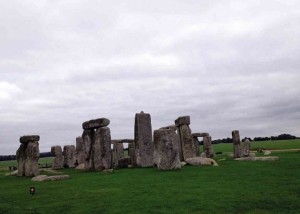
It is now classified as a World Heritage Site and Britain’s “greatest national icon.”
I walked around the site and saw the monument from different angles. While listening to the story and significance of Stonehenge from the audio guide, I thought of special places in the Cordillera such as the dap-ay and sacred spaces and altars found in nature, such as the pat-patayan trees or rock formations.
I felt a connection to the divine, and to the ancient peoples who walked the same grounds.
Thor
The Thor is found in Glastonbury, a small town in Somerset, known for two legends around romantic figures: Joseph of Arimathea and King Arthur.
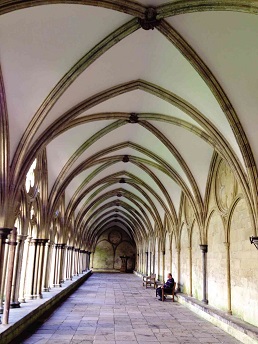
Joseph is believed to have taken Jesus’ body after the Crucifixion; and then Joseph came to Glastonbury with the Holy Grail, the cup used by Jesus in the Last Supper, that contained Jesus’ blood.
I first learned of the story of Jesus from my Catholic education. It was a story, as in any book, remembered at times. But it was while sitting on a bench inside the Thor that I felt a calming presence and a connection to Jesus.
Outside the Thor, fog had come in, making the view somewhat hazy. I thought of Camelot, a brief, shining moment, when the ideals of chivalry were upheld and the round table where everyone was equal.
Camelot is also believed to be in Glastonbury, where King Arthur and Queen Guinevere are buried. The story of King Arthur revolves around his search for the Holy Grail, likewise believed buried underneath the Thor.
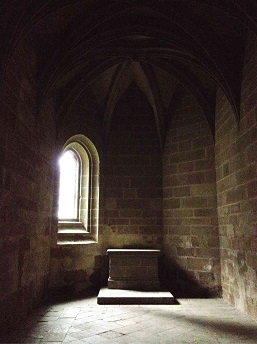
Book heaven
On our climb up to the Thor, we passed a stone marker engraved “Avalon Orchard.” There was mist all around as we made our way up, and scenes from the book “Mists of Avalon” came to mind. The book is the story of Camelot from the women’s point of view.
We also took day trips to Ludlow, Ross-On-Wye and Hay on Wye, all located along the Wye River.
Ludlow and Ross-On-Wye are small market town towns with ancient buildings.
Hay-On-Wye, known as the “town of books” or “book heaven on earth” is located in Wales against the backdrop of the Black Mountains. This town has 30 second-hand and antiquarian bookshops, and every available building is filled with books, including the old workhouse, a chapel, the Hay Castle and even in some gardens where bookshelves are located.
People come here from all over and stay for days to get their fill of books, many to resell. We made it to only four, two of them, Richard Booth’s Book shop and Hay-On-Wye Booksellers, were large book havens where one could be lost in time.
Many of the books I held were stories in themselves, having survived the test of time. I was transported to other worlds.
I spent hours scouring the shelves for biographies and history by women writers.
My finds for the day were memoirs by Noala O’Faolain, a Dublin woman journalist and writer.
In between forays to bookshops, we walked on cobbled stones, passing antique shops, galleries, and stalls of local food produce brought in for market day.
London
Our last destination in the British Isles was London, now a multiethnic city with many Middle Eastern folks among its residents.
We passed some bars along Queensway where people sat and puffed from the hookah, an Arabic water pipe for smoking shisha-flavored tobacco.
It was a delight walking through Hyde Park and Kensington Garden, two large, open spaces that have retained their unspoiled environment.
There was much to soak in the Tate Museum, Serpentine Gallery and the Royal Academy of watercolor exhibits, where we spotted two works by Prince Charles.
We watched “Matilda,” a musicale, and the next day felt like Julia Roberts walking in Notting Hill.
We had the last of a truly English snack—a scone covered with fruit jam and topped with clotted cream. It is so rich but such a pleasure to eat, even knowing the calories that come with it.
City of love and light
We took the Eurostar to Paris and arrived at the Gard du Nord after three hours. My friend Franck had a big smile on his face, so I knew I was in good hands.
He drove me around the city, pointing out landmarks, before delivering me to my friend Tata Poblador’s place.
Paris is called the City of Light and Love, and aptly so, but food should be added to its tags: City of Cuisine.
Monuments and places of interest are lit up at night, making these prominent. The Eiffel Tower looks like it is bedecked with diamonds, while Napoleon’s tomb shines as bright, a reminder of greatness and how greatness has its mortal limits.
Paris is a city of lovers, and public display of affection is commonplace. Couples from all over come to decorate the bridges across the River Seine, putting padlocks on the railings to seal their love.
Food is the high point of any visit to Paris, and eating is done with flair. There is a fresh supply of food produce daily and the meat and fish taste good, whether it is cooked at home or in a restaurant.
Without knowing it, one can easily indulge oneself with favorite foods escargot, foie gras and French wines—doing as the French do.
Normandy
From Paris, friends Franck and Jaqui took Tata and me on a four-hour drive in their Peugeot to Normandy in northwest France. However, there were pit stops along the way for coffee, snacks and toilets, and just to stretch our legs.
We passed through landscapes, plateaus, apple orchards and ended up along the coast.
Normandy, once peopled by the Celtic tribes, came under the Roman Empire; Germany, England; and finally France. At the onset of World War II in 1940, the Germans took control of the place and the Americans led by General Dwight Eisenhower liberated the area from Nazi control in 1944, signaling Germany’s defeat.
Our weekend home in Normandy was at the Castle where General Eisenhower stayed after US forces landed. They gave me the room with a balcony and the bed where the general slept. Looking out at the sea was Mont Saint Michel, standing on the wide expanse of the bay.
Scenes from World War II, recalled from my father’s stories to us kids, came to mind: The Fall of Bataan; the guerilla resistance which Dad joined; and the American landing followed by Liberation. It occurred to me that France and the Philippines had a shared past.
Mont Saint Michel was built in 706 in honor of Michael the Archangel, believed head of the heavenly militia because “he fights and defeats the dragon, a symbol of evil.” It was a Benedictine Abbey in the 10th century, a fort in the 14th century, a prison in the 1800s, and declared a World Heritage Site by Unesco in 1979.
Some pilgrimages go on foot across the bay, but we opted for the easier and safer route by shuttle bus, after warnings of quicksand caused by changes in the tide.
We climbed some 300 steps, taking one step at a time. We slowly made our way up through the different levels through the abbey, enjoying the light and shadow in the cloister, courtyard, crypt and funerary, monks dormitory, chapel, refectory, dining hall, scriptorium, until we reached the top where we enjoyed a 360-degree view.
Being there took us back to early times, from the invasion of the Vikings to succeeding intrusions when the island changed rulers.
Along the 400-mile Normandy coast are many eateries, mostly offering seafood dishes. Our meals for the weekend consisted of luscious oysters, scallops, mussels, clams, sole, mackerel, and we had the staple poisson fish soup.
On the way back to Paris, we passed friend Bonnie Melvin’s country house in an idyllic setting with a lake in her property. We met Bonnie with other Filipinos living in Paris over dinner, and during the despedida she hosted on the eve of our departure.
Conversation was lively among Filipinos Evelyn Galang Fortis, Ina Mejia, Ligaya del Fierro and Vic Magsaysay who is making waves as a chef in Paris.
The last two days were spent at the Musee D’Orsay and Petite Palais and walking along the River Seine. With our feet starting to complain and myself missing my grandkids, it was time to go home.
On the way to the Charles de Gaulle airport, I looked out at the lights of Paris and thought of the weeks past, the places visited, the insights, and the friends and fellow travelers on this journey. I was very thankful.













































